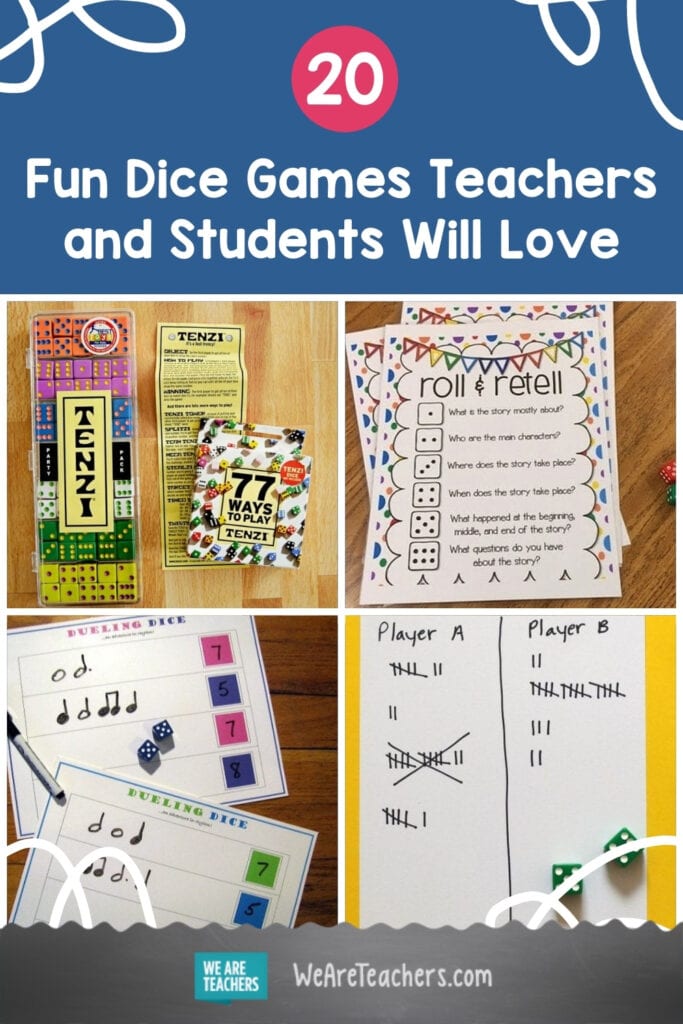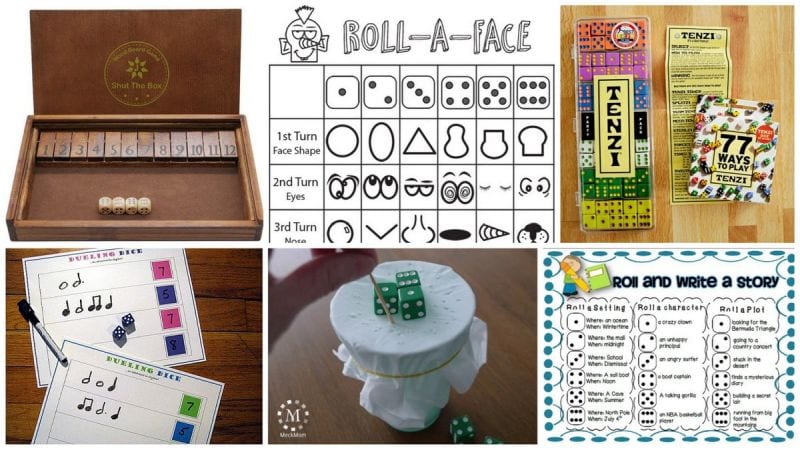Dice are a classroom staple for many teachers since they’re inexpensive and have so many uses. These are some of our favorite dice games and activities for teachers to try in the classroom. Families will enjoy them at home too!
1. D-icebreakers
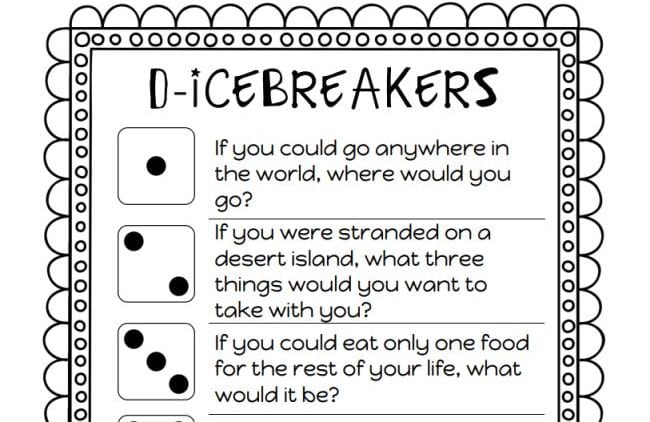
Mix up your next icebreaker activity by rolling a die to see which question each student will answer to introduce themselves. Visit Scholastic for a free printable PDF or customize one for your own use.
2. Tenzi
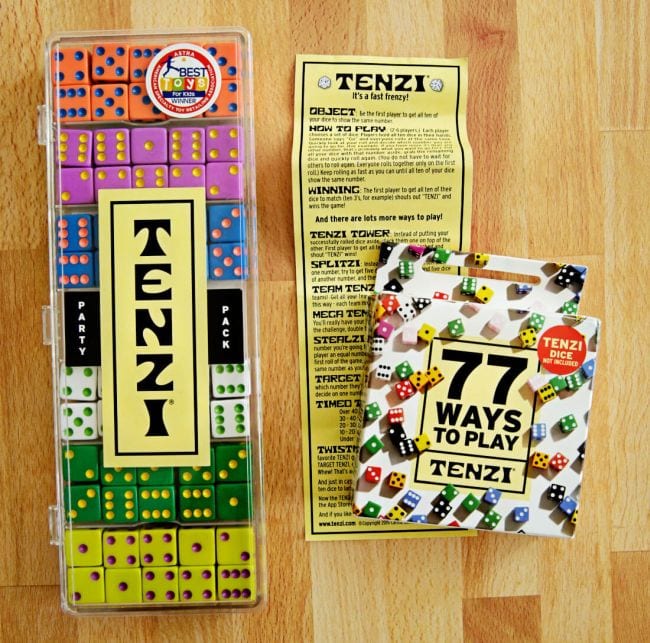
Tenzi is a fast-paced dice-rolling game that’s perfect for inside recess! Each player starts with 10 dice. At the same time, all players begin rolling and re-rolling the dice, trying to get all of them to show the same number. There are dozens of variations, too, so Tenzi is really multiple dice games in one!
Learn More: 30 Handmade Days.
3. Over the Mountain
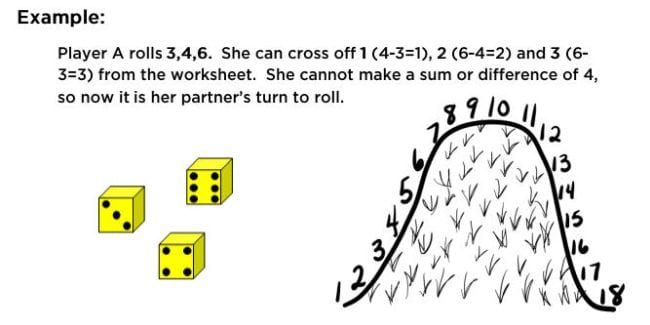
In this math game, students take turns rolling three dice, then adding or subtracting two of the dice to cross off the numbers 1 – 18 in order. Find the full rules in this PDF from PBS.
[contextly_auto_sidebar]
4. Dice Wars
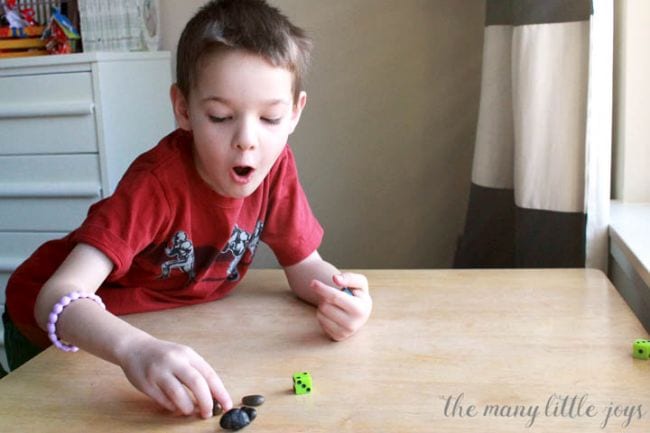
Get more math practice with this easy dice game. You’ll need several dice and some small objects to use as counters. Each player rolls two dice and adds them; the one with the larger sum steals a counter from the other. Get the rest of the rules from The Many Little Joys.
5. Roll a Value
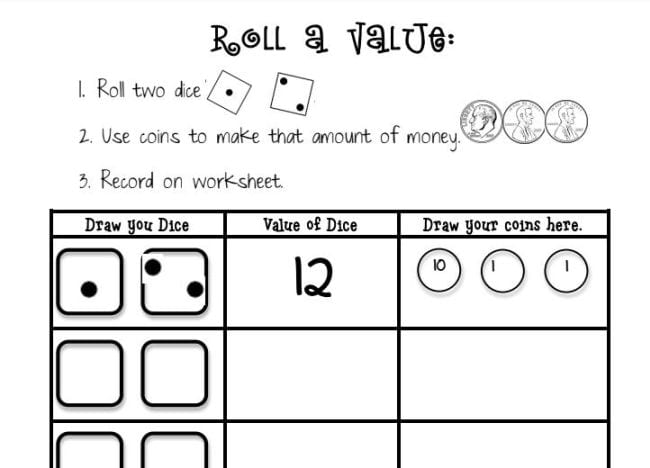
Students learn about dimes, nickels, and pennies with this simple dice game meant for younger learners. Roll two dice and add up their sum. Then, determine which coins to use to add up to that number and draw them on the worksheet.
Free Printable: Sarah’s First Grade Snippets.
6. Going to Boston
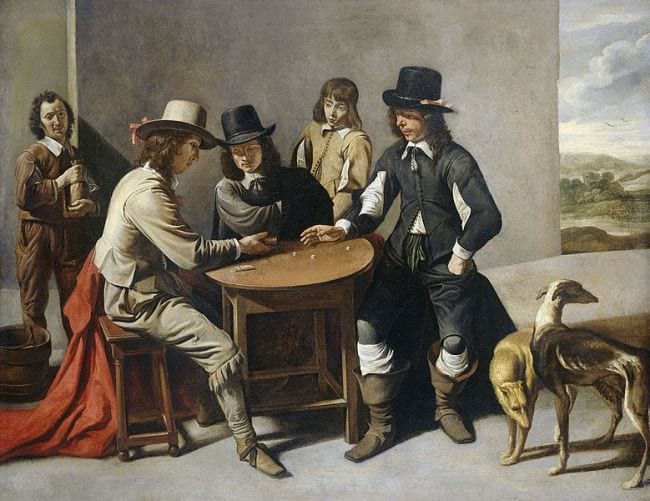
Here’s a game that’s been around for a very long time, and is great for basic addition skills. You need three dice for this one. A player rolls all three dice at once, then sets the highest die aside. Roll the remaining two, and again set aside the highest. Roll the last die, then add all three together. Each player takes a turn doing this, with the highest score winning the round. Play to a set number of rounds, or see who can get to a designated number like 100 first.
7. Roll to Six
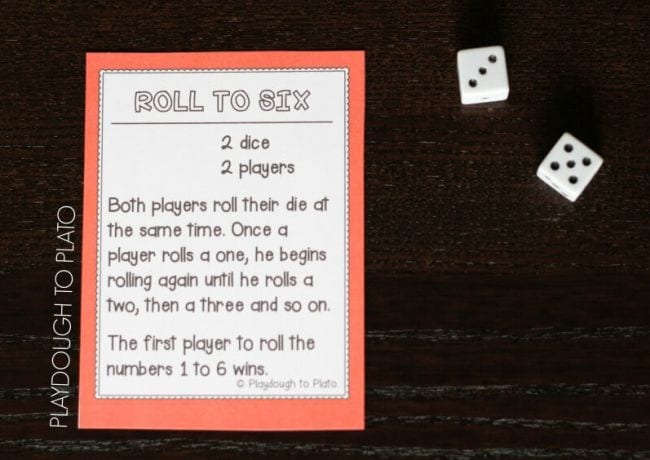
Each player takes a die and starts to roll. When a player rolls a one, they then begin rolling to try to get a two, then a three. They continue until one player has rolled one through six.
Learn More: Playdough to Plato
8. Roll and Retell
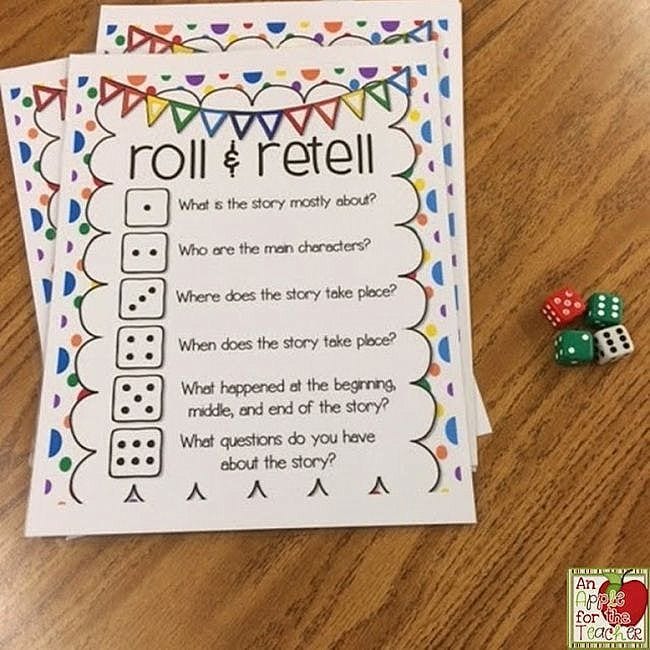
Here’s a fun way to check for reading comprehension and practice summarization skills. Use this as a class or in small groups to discuss a story or book you’ve just read.
Learn More: An Apple For the Teacher
9. Break the Ice
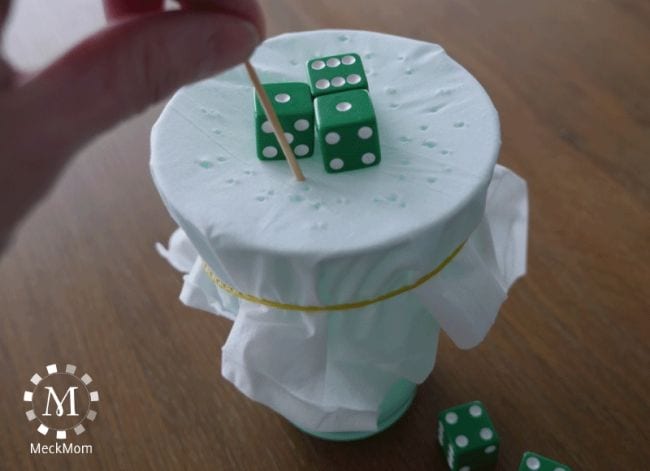
This is such a clever twist on dice games! For each player, use a rubber band to secure a tissue over the top of a cup. Rest one die on top and roll another. Use a toothpick to poke the number of holes you’ve rolled. If you roll a one, add another die to the top of the cup. If a player’s die falls into the cup, they’re out.
Learn More: Meck Mom.
10. Shut the Box
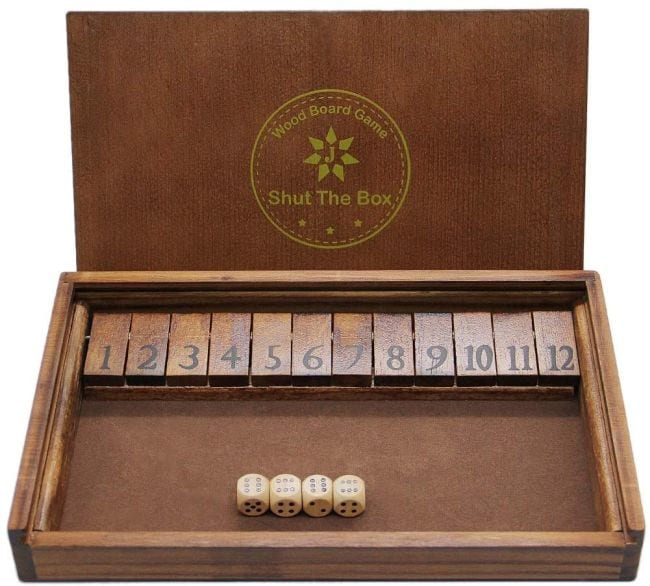
This is another old game that focuses on addition facts. The goal is to “close” each of the numbers in the box from one to ten. To do so, a player rolls two dice and adds the total. They then may close as many open numbers in the box as they like, as long as together they add up to the total on the dice. For instance, if a player rolls 11, they may close 1, 2, 3, and 5, as these add up to 11. If no numbers are available to add up to the dice total, play passes to the next player and continues until someone finally “shuts the box” by closing the last available number. You can play this game with a specially designed box ($11, Amazon) . You don’t need the box, though; simply have kids write out the numbers 1 to 12 and cross them out as they play.
11. Stuck in the Mud
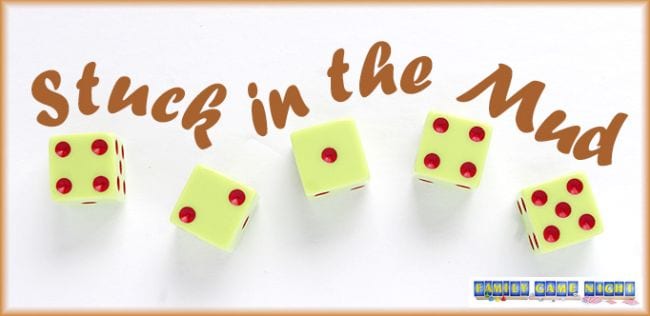
For each turn, a player rolls all five dice. Set aside twos and fives (they’re stuck in the mud!), then re-roll the rest. Set aside twos and fives, and add up any that are left. Repeat until all the dice show twos or fives, add up the totals, and that’s your score for that round. If it sounds complicated, check out this walk-through from Family Game Night.
12. Roll and Write
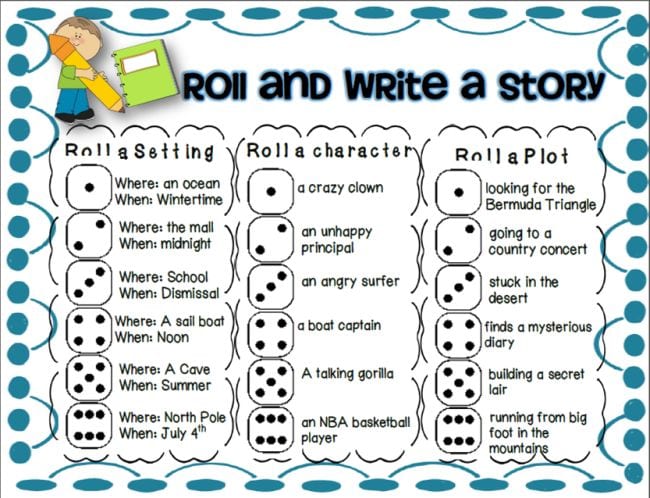
So often, when you ask kids to write a story, they say, “I don’t know what to write about!” Writing dice games like this one solves that problem in a totally cool way. Print and laminate this free printable from Where the Wild Things Learn and set it up at your writing station with some dice. There are so many possible combinations here that kids will be churning out novels in no time!
13. Pirates!
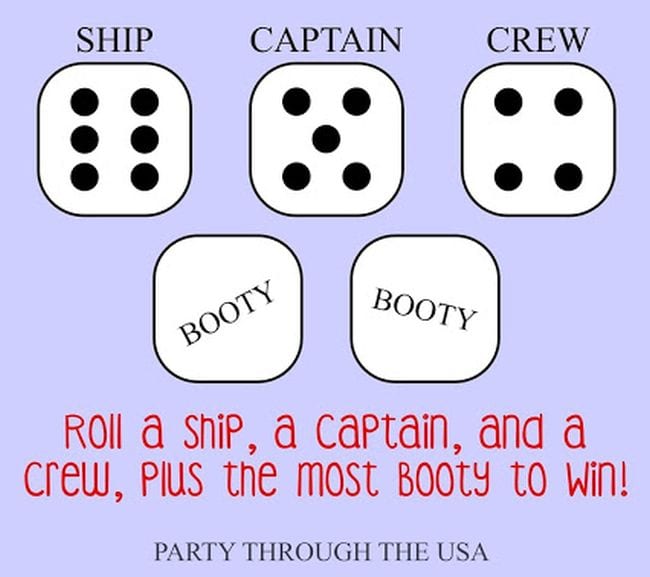
You’ll need five dice for this one. A player rolls the dice all at once, up to three times. They must roll a six (the ship), a five (the captain), and a four (the crew) to score any points for that round. If they do, add up the two remaining dice (the booty) for their score.
Learn More: Party Through the USA.
14. Block Out
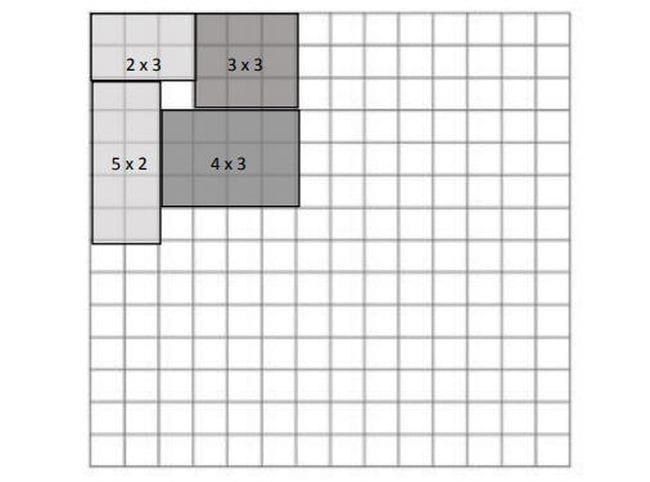
You’ll need graph paper and colored pencils for this dice game about figuring areas. Player one rolls 2 dice and draws a rectangle using the numbers rolled as the length and width on graph paper, coloring it in if desired. The second player does the same, with play continuing until there is no room to draw any more rectangles. Decide the winner by figuring the area of the rectangles of each and adding them together. See more and get other math games from this PDF.
15. Roll-a-Face
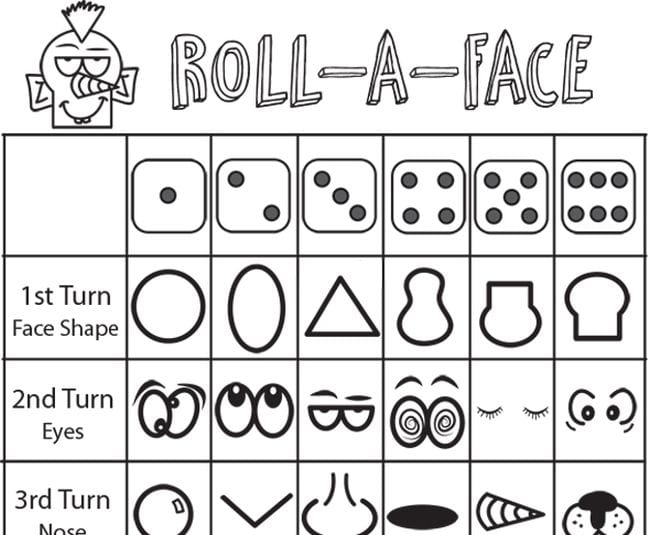
Make funny faces with this silly little game. Kids roll a die and use the numbers to draw the face shape, eyes, nose and so on as indicated. This is fun for kids who say, “I don’t know what to draw!”
Get Printable: How to Draw
16. Dueling Narrators
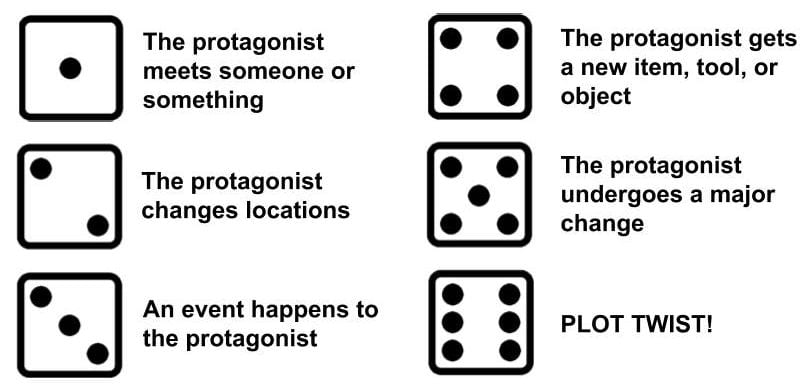
Turn a writing exercise into an adventure! Partner one (or team one) plays the “good narrator” who wants to turn the story into a comedy (a story with a happy ending, not necessarily a funny one). Partner two (or team two) plays the “bad narrator” who wants to turn the story into a tragedy (one that ends in the demise of the protagonist). Players take turns writing a paragraph of 2–5 sentences, rolling a die to determine what happens next, and passing it to the next writer.
Learn More: Crank Out Words
17. Roll to 100
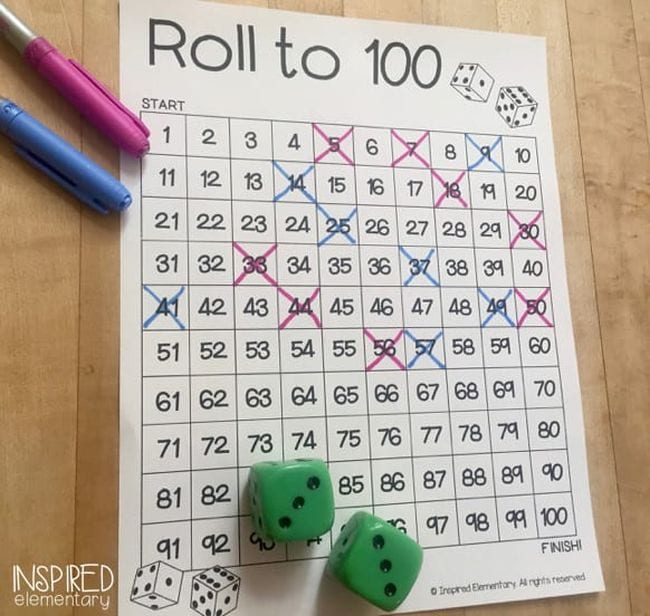
Grab a hundreds chart and two dice for some practice with adding and counting on. Roll the dice and add up the numbers, then move ahead that many squares on the chart, counting out loud as you go. First to 100 wins!
Learn More: Inspired Elementary
18. Roll a Word
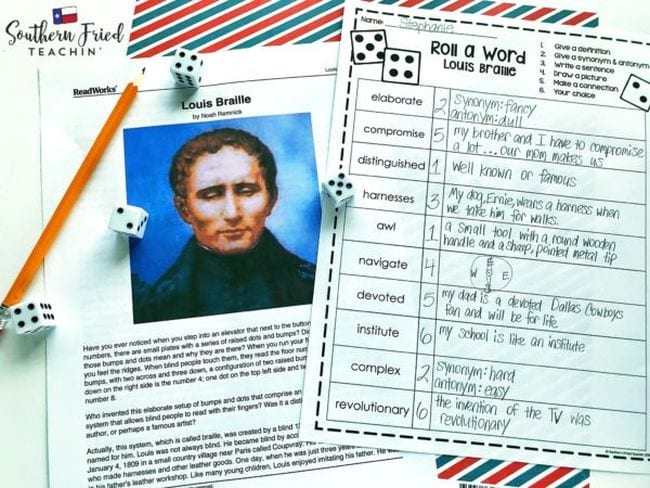
Dice games help spice up vocabulary practice, something many kids find dull. Set a list of words, then give each kid a die to roll. Based on the number, they do one of the following for each word:
- Give a definition.
- Give a synonym and antonym.
- Write a sentence.
- Draw a picture.
- Make a connection.
- Your choice.
Learn More: Southern Fried Teachin’
19. Pig
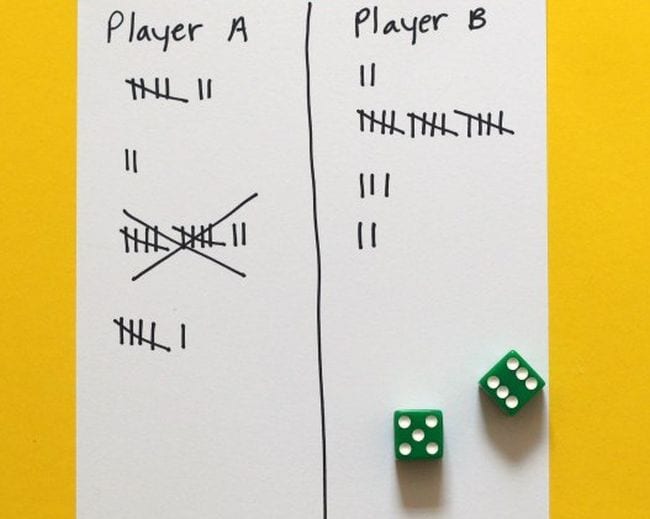
This is another one of those beloved math dice games that have been around a long time, and you’ll see why. The concept is simple enough. Kids roll the dice and add the sums, repeating as many times as they like on each turn. However, if they roll a one, their turn ends, and they lose all the points for that turn. This element of chance makes the game exciting, so students will practice addition skills without a complaint!
Learn More: What We Do All Day
20. Dueling Dice: A Rhythm Game
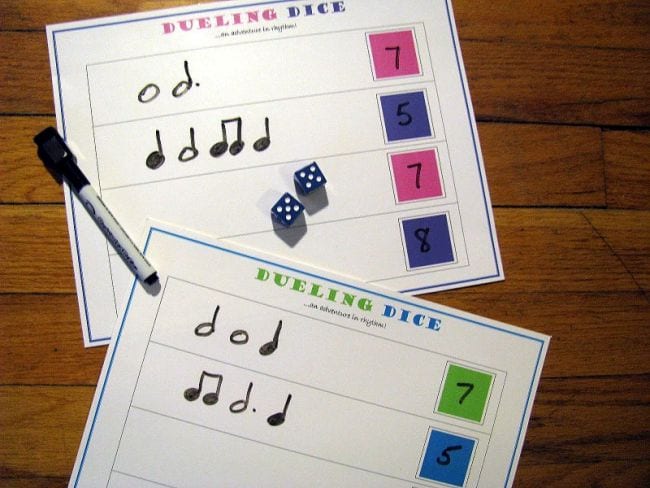
Music teachers can get in on the fun with this simple game. Have kids roll a pair of dice and add up the sum to get the target number. Then, they figure out a combination of notes that will equal that value. Make it a race between students to amp up the fun!
Free Printable: Notable Music Studio
For even more fun, try dice-in-dice! Here are some clever ways to use them.
Plus, keep up with all the latest teaching tips and ideas when you subscribe to our free newsletters!
